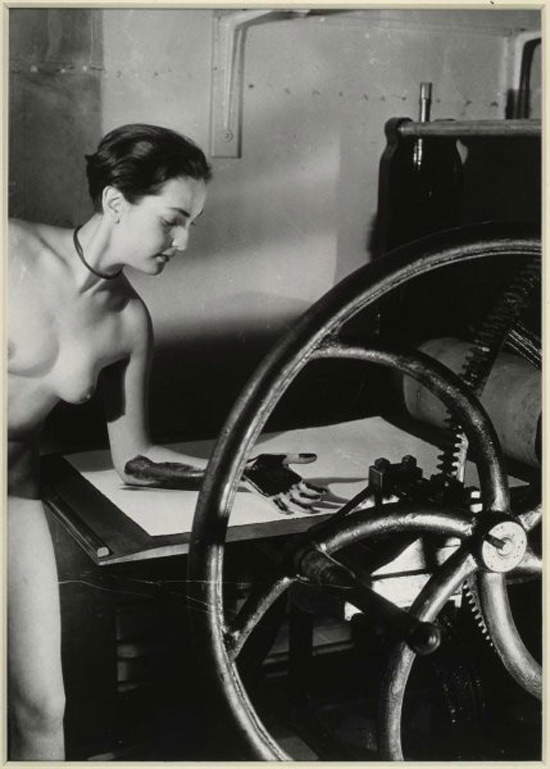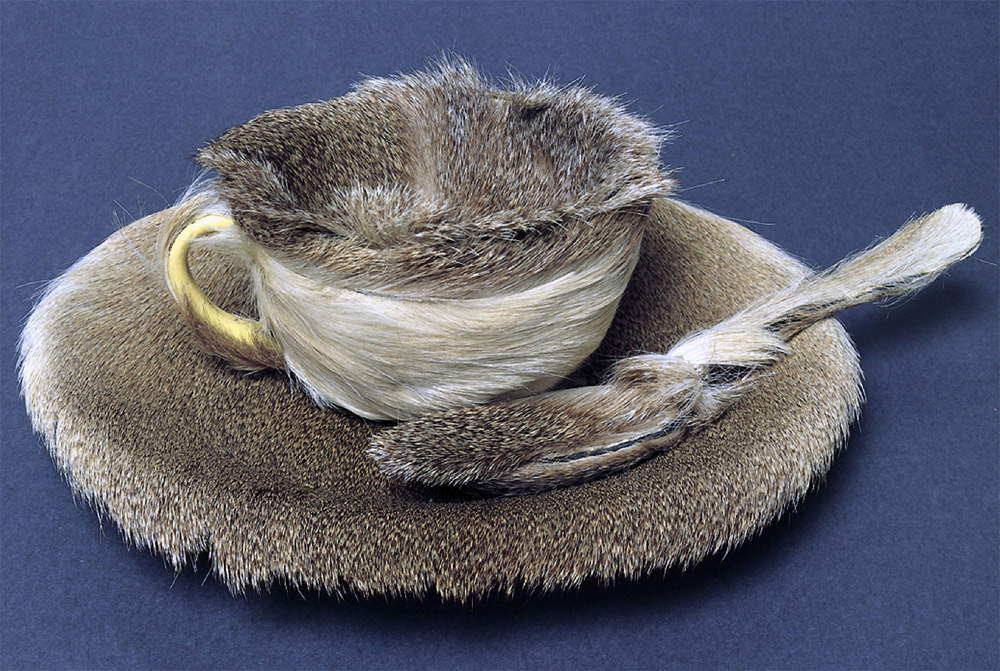Have you ever heard of Meret Oppenheim and her surrealist teacup? Nina Martyris told the story of this particular work in this article and Ilaria translated it for you! Here is the link to the original.
The art world is celebrating a century since the birth of Dadaism; it is worth considering how this anti-art movement born in a café in Zurich during World War I gave rise to an emblematic work of art using the simplest of tableware objects: the teacup.
In 1936, a ’twenty-three-year-old Swiss artist, Meret Oppenheim, bought a teacup with saucer and spoon in a Paris department store and covered it with the light cream-brown fur of a Chinese gazelle. Her furry little object became a clear example of the Surrealist artifact art movement that sprang from the flashy bowels of Dadaism. Interest in this work stemmed in part from the discussion that led to its creation. One day in 1936, Oppenheim met Pablo Picasso with his new love Dora Maar, his friends, at the Café de Flore, the fashionable Parisian café habitually frequented by artists. Beautiful, intelligent and fiercely independent, Oppenheim had been living in Paris for the past four years. She had barely managed to sell her work, but had made a modest living designing jewelry and accessories for fashion designer Elsa Schiaparelli, a forerunner known for her shoe-shaped hats and phone-shaped bags. In a Surrealist set, Oppenheim had posed nude for Man Ray and had recently ended a fiery year-long affair with German painter Max Ernst that suddenly ended over lunch in a café.
 |
| Man Ray, Erotique voilée - Meret Oppenheim at the printing press (1933; silver gelatin print on paper, 37.5 x 26.6 cm; Madrid, Museo Reina Sofía, posthumous copy printed in 1982). |
Cafés would play an important role in his life. It is said that at Café de Flore Picasso commented on Oppenheim’s bracelet, a wide brass-colored bracelet covered with ocelot fur, which he had designed the previous year for Schiaparelli. Picasso asserted that anything could be covered with fur. Even this saucer and cup replicated Oppenheim. Then, when he noticed that her tea was getting cold, she jokingly asked the waiter un peu plus de fourrure a little more fur to coat her cup. Soon after, Oppenheim went to the department store where she would do the most famous shopping of her career. In her studio, she skillfully covered the items so that the light brown formed a dark border around the outer edge of the teacup, coordinating it with the saucer, while the body of the cup was cream colored.
André Breton, the founder of surrealism, was enchanted by it. It was a work of art that fit perfectly with his statement: beauty will be convulsive or it will not be. He gave it the title Le déjeuner en fourrure (Breakfast in Fur) and exhibited it that year at the first Surrealist exhibition devoted to objects.
 |
| Meret Oppenheim, Object or Breakfast in Fur (1936; cup diameter 10.9 cm, saucer diameter 23.7 cm, teaspoon length 20.2 cm and fur; New York, MoMA Museum of Modern Art). |
Upon presentation, the object became a receptacle for all kinds of theories, fears and desires. In Freud’s time, a gastro-sexual interpretation was inevitable: the teaspoon was phallic, the cup vaginal, the fur pubic. For some, the tongue-shaped teaspoon brought to mind unpleasant sensations of a hairy tongue. Others felt discomfort at seeing a fine tea object transformed into something decadent and animalistic; some felt vomiting thinking about putting wet hair or tea leaves in their mouths; others wanted to caress it.
Marcel Duchamp, Oppenheim’s friend and mentor, had accomplished something similar in 1919, when on an illustrated postcard depicting the Mona Lisa he drew a black mustache and beard on the woman’s smooth face. But while his hairy additions had a comic effect, Oppenheim’s were more gruesome, more gory.
Among those most impressed was Alfred J. Barr Jr. the young director of New York’s new Museum of Modern Art. When Oppenheim expressed her intention to sell the work for 1,000 French francs, he offered her more or less half, $50, and she accepted. Because this was the first work by a woman that the museum had purchased, Oppenheim was jokingly called the First Lady of MoMA.
For her, the unexpected success had mixed results. According to her niece Lisa Wenger, the fur cup became her prison. The following year, having run out of $50 funding did not last long, and with Nazism on the rise, Oppenheim returned to Switzerland. She lives in Basel, hates it badly, Wenger said during a lecture she gave at Art Basel in 2013. Compared to Paris, she is small and conventional; people think she is strange because she wears a green and a red stocking.
It was the beginning of a long depression that lasted 17 years, according to Wenger. Oppenheim was at any rate vulnerable to attacks of anxiety and melancholy, and the year before she created her fur cup, her physician father sent her to consult the great Carl Jung. In his judgment, as he wrote to her father, Oppenheim reflected the youthful disorientation of our era and had no neurotic complications.
As part of MoMA’s permanent collection, Oppenheim’s hairy ensemble even as it is losing its hair continues to trigger reactions as intense as those unleashed in previous years in Paris.
As art critic Will Gompertz writes in his 2012 book What are we looking at?, Two incompatible materials have been put together to create an uneasy vessel. Fur is pleasant to the touch, but disgusting when it rests in your mouth. You would like to drink from the cup and eat from the spoon that is their purpose but the feel of the fur is revolting. It is infuriating.
At MoMA the work is known by the unadorned title Oppenheim gave it: Object, not Breakfast in Fur, the sensuous name Breton chose. His idea was to refer not only to Edouard Manet’s famous painting Le déjeuner sur l’herbe, but also, more astutely, to Venus in Fur, the 1870 sadomasochistic novel by Austrian writer Leopold von Sacher- Masoch (his last name is the root for masochist).
Oppenheim, who was certainly no prude, claimed that she had no whips or chains in mind when she clothed her tea objects. All she wished was to make something commonplace strange. Fortunately, Object was not conceived in the present. Otherwise it might have been called Fifty Shades of Earl Grey.
Warning: the translation into English of the original Italian article was created using automatic tools. We undertake to review all articles, but we do not guarantee the total absence of inaccuracies in the translation due to the program. You can find the original by clicking on the ITA button. If you find any mistake,please contact us.